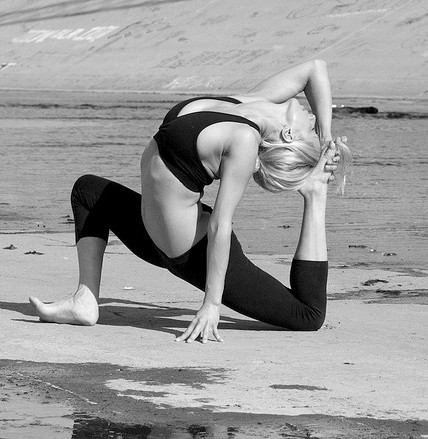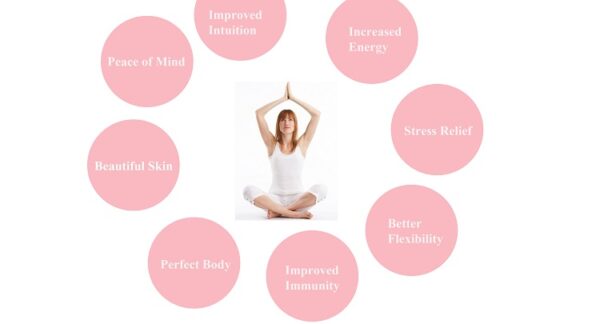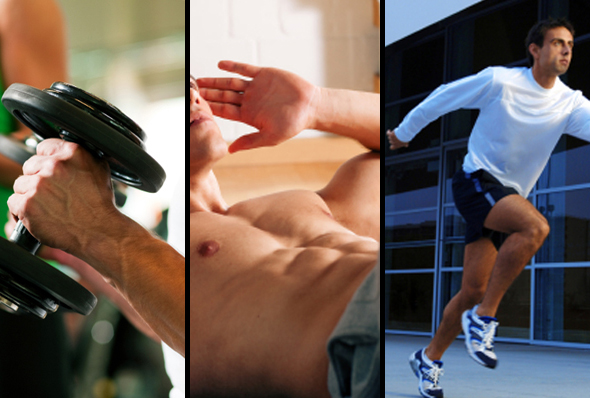Top 10 Useful Aspects of Yoga
Predating to 500 BCE, Yoga’s teachings and traditions have been found in Hinduism, Buddhism, and Jainism. Namaste: “I honor the place in you in which the entire universe dwells. I honor the place in you which is of love, of truth, of light, and of peace. When you are in that place in you and I am in that place in me. We are one.” Namaste is a customary greeting in Sanskrit, the liturgical language of Hinduism, Buddhism, and Judaism—also conveyed spiritually in yoga. Sadly, though, Nazi, Germany tarnished the swastika symbol in Sanskrit that means, “That which is associated with well-being.” Yoga is an ancient form of expansion of the mind, body, and soul to the universe. Surprisingly enough, yoga itself means, “Union, harmony, and balance.”
“Yoga is the journey of the self, through the self, to the self.” – The Bhagavad Gita.
10

The most common reason for having a difficulty with balance is Benign Paroxysmal Positional Vertigo (BPPV). This is due to an unaccustomed change in position of the head the body does not recognize. The symmetrical canals in the inner ear are responsible for our body’s balance. However, “practice makes perfect,” and that applies to improving your balance, thanks to the teachings of yoga. One of endless possible ways yoga can improve balance is by discovering the awareness and limits of your body. By this, regular practice of yoga calibrates you senses, center of gravity, and vestibular components, thus better balance.
Reports by the Huffington Post, along with 15 other studies, show progression for many people, even for senior citizens. So, anyone can benefit from yoga on several levels. Ladies, do you seem to look like Bambi in high heels? Well, yoga can be useful to fix that problem. A few of many poses like Tree Pose, Half Moon, Balancing Butterfly, and Dancer can significantly improve your balance and equilibrium.
9

Being as limber as a cat or a young child is not necessary in order to do yoga. All levels of limberness and stiffness are welcome, so do not be deterred, discouraged, or scared away. However, yoga can improve your flexibility and reduce any arduousness. Being able to touch your own toes may seem easy, but for some, like me, it is not so easy. The warm up stretches and motions alone can help limber you up. For instance, speed is not required to play dodge ball. You can work up your speed, like flexibility in yoga.
Timothy McCall, M.D., reported on the Yoga Journal that one would notice “gradual loosening” by practicing yoga, and it “is no coincidence.” He also states that inflexibility is damaging to the body. “Tight hamstrings can lead to a flattening of the lumbar spine, which can cause back pain. And inflexibility in muscles and connective tissue, such as fascia and ligaments, can cause poor posture,” said McCall.
8

When one thinks of yoga, upper and lower body strength is the most important and the “backbone.” Contrary to popular belief, your core muscles (6-pack; abdomen) are the canter and stabilizers of many poses. The abdominal muscles balance and control the motions through many poses such as Bow, Standing Bow, Boat, Balancing Plank, Firefly, and Handstand Split. Lauren Carpenter, started studying Core Power Yoga in 2003 and made a career out of it since 2007, explains that without a strong, stretched core, you are bound to injuring yourself. Therefore, by strengthening and limbering your core, it lowers your chances of severely hurting yourself and executing poses more properly.
In addition, “a sound core helps balance and is the foundation of many different poses and adds grace, for beauty and transcendence, in yoga,” said by self-taught yoga instructor, Stevie Ray Helm Brecht. She also says that your abdominal system is vital for even the fundamentals of yoga, and during the transitional period from pose to pose.
7

Yoga has developed a reputation to the unaware for being a trend of the hippies. Well, the fact of the matter is that not only hippies practice yoga, but people of all ages, backgrounds, statuses, education levels, ethnicities, religions, countries, and etcetera! “71.4% of US yoga practitioners are college educated, and 27% have postgraduate degrees,” Katie Sorene reported on Tripbase Blog. Furthermore, alongside with the educated, “44% of people who make $75,000 or more practice yoga,” and “24% of those making an upwards of $100,000 do the same.” At the same time, “40.6% of people 18-34 perform yoga, while 41% are between the ages of 35-54, and 18.4% are 55 or older.”
It has gone as far to say that yoga is the first and only form of Globalization. It is a beautiful thing by bringing the world together in harmony. By crossing cultural boundaries—and with its own supportive and welcoming culture—yoga brings the world under a new “Global Culture”—union.
6

The benefits from yoga are practically endless. Mental, physical, and spiritual are the main three benefactors. With the physical aspect, injuries can occur from out of nowhere at random. Yoga has therapeutic properties that aid in many different recovery processes, and is an “alternative therapy” by Catherine Woodyard. For example, someone that just came out of back surgery can experience lesser strain and swelling on the spinal cord by loosening and relaxing the vertebras. Professional athletes LeBron James and Victor Cruz have used and still use yoga to prevent injury and hone their senses and skills.
Not only does yoga help relieve and reduce physical discomfort, studies have successfully shown that it may also help with mental and psychological pain. The Boston University found that “low brain levels of the neurotransmitter GABA” (Gamma-Aminobutyric Acid) “are often found in people with depression; SSRIs, electroconvulsive therapy, and now yoga, it seems, can boost GABA.” Consequently, yoga improves your mental health and brain waves for an overall better quality of life.
5

Like taking a multivitamin, yoga can improve your health in so many ways. Daily or every other day sessions of yoga for at least 20 minutes can lowers your blood pressure, weight, anxiety, chances of migraines, food cravings, and cholesterol. While at the same time, boost your immunity, muscle strength, sleep patterns, flexibility, endurance, and sexual performance. By all of these factors in play, the odds of one having heart disease, heart attacks, stokes, Alzheimer’s, diabetes, and certain cancers are significantly lowered by a huge margin.
In fact, yoga even helps slow the process of aging by decelerating the decay of cells and force old blood and toxins out of your organs while entering a pose. When the poses is released, fresh, oxygenated blood flow back into vital organs. Cell regeneration is also boosted. Likewise, along with anti-aging, it also helps with poor posture by decompressing the pressure in joints and ligaments, and new blood rejuvenates cartilage and tendons. Unbeknownst to many, the same way yoga helps with food cravings, it also helps one quit smoking.
4

Yoga has many forms for several different needs; one of which is weight loss. Jen Cassetty, an American College of Sports Medicine certified Health Fitness Specialist, in New York, reported that an intense way to lose weight is by exercising with yoga “75 to 90 minutes” “4 to 5 times a week.” This could burn an upwards of 797.75 to 957.3 calories in said timeframe for anyone that is somewhat in shape to already in well enough shape. However, gentle yoga at a pace of 20 to 40 minutes a day will burn 79.38 to 158.76 calories. This is a slower, easier rate for beginners or those who are unable to participate in extraneous exercises. Nonetheless, over time, the practice of yoga lowers weight at either an extreme or a sluggish speed. It is all up to the individual and their preference of workout routines.
3

Patience is almost a lost virtue in today’s society. Fast food restaurants, over-night shipping, speeding traffic, and the need for faster internet are all around us every day. Fortunately, though, through the wisdom of yoga, one can improve patience. Some patience is essential to progress it, but only a little bit. Yoga helps with patience through calming the mind by meditating. Meditation is a basic, yet complex fundamental of yoga. The Third Eye—or the “6th Chakra”—is a terminology that is the expansion of the mind to the universe, and is one with the universe, a “common post.”
Just by meditating before or after performing yoga or any form of exercise can reduce stress levels, improve memory, and heighten one’s senses. Just 11 minutes of mentally chanting “Wahe Guru” can intensify your spiritual expression.
2

Athletes of difference levels do not use only one workout routine. They use multiples of exercises to train in order to be at their physical peak of fitness. Yoga can be very advantageous for any workout regiments. For instance, mixing yoga into your routine will help you be more relaxed, limber, balanced, prepared, and agile to perform more efficiently in your sport. It even helps you recover from injuries more quickly, too. In addition, cross training with yoga strengthens your muscle by three-fold, because of the clashing workouts and Muscle Confusion Effect.
Current and retire professional athletes used and still yoga for many sorts of reasons to fit their needs. Evan Longoria, MLB, Vernon Davis, NFL, Kevin Love, NBA, and the Brazilian Rugby Team use yoga to warm up, for post workout, and relieve stress. Even retired 7-foot-1-inches tall Shaquille O’Neal used yoga during his career to preserve his body from breaking down too quickly. He was quite impressed with the results, but called himself the “worst yoga student in the history of yoga.”
1
Improved Sex– Limber, Longer Sexy Time

With all the added health bonuses, sex may be the most obvious factor. If it helps everything of the body, why would it not improve your sex life? In one way it helps is by exploring your body, thus being comfortable with thy self and boost confidence, because if you know your own body and its limitations thoroughly, then you can experience sex more fully.
Another addition is flexibility. Being flexible during sex can improve intimacy and pleasure levels. Certain positions and poses exercise and tone different parts of the body. By this, arousal, stimulation, and release from an orgasm are more pleasurable and intensified, therefore, ultimate satisfaction. Simultaneously, your spiritual expression and meditation hones the connection you would have with the one you are intimate with.
- Top 10 Free Games - August 3, 2015
- Top 10 Ways to Stay Productive - July 13, 2015
- Top 10 Health Related Excuses to Have Sex - January 26, 2015



